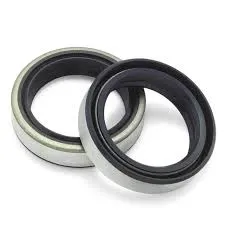11 月 . 01, 2024 12:18 Back to list
Understanding Car Engine Oil Seals and Their Importance for Vehicle Maintenance
Understanding Car Engine Oil Seals Importance, Types, and Maintenance
The engine is often regarded as the heart of a vehicle, responsible for powering it over countless miles. Amidst the intricate components that make up this crucial system, engine oil seals play a vital role in maintaining the health and efficiency of your car’s engine. Often overlooked, these small but significant parts are essential for preventing oil leaks and ensuring optimal performance.
What Are Engine Oil Seals?
Engine oil seals are rubber or elastomer gaskets designed to seal the various openings within the engine, primarily to contain oil and prevent it from escaping. They are strategically placed around rotating shafts, such as the crankshaft and camshaft, where they need to withstand high temperatures and corrosive oils. Designed to adapt to dynamic movement, these seals ensure a fluid-tight fit that prevents oil from leaking out while keeping contaminants from entering.
Importance of Oil Seals
The importance of engine oil seals cannot be overstated. They protect the engine components by keeping the oil contained and maintaining the necessary pressure for lubrication. A compromised seal can lead to oil leaks, which may result in several issues
1. Engine Damage Insufficient lubrication can cause severe wear on moving parts, leading to costly repairs. 2. Environmental Impact Oil leaks can contribute to pollution, harming the surrounding environment. 3. Reduced Fuel Efficiency An oil leak can decrease engine efficiency, leading to more frequent refueling. 4. Engine Overheating A loss of oil can lead to overheating, potentially causing catastrophic engine failure.
Types of Engine Oil Seals
car engine oil seal

There are several types of oil seals used in vehicles, but the most common include
1. Crankshaft Seals Located at the front and rear of the crankshaft, these seals prevent oil from leaking out of the engine and protect adjacent components. 2. Camshaft Seals These seals work similarly to crankshaft seals but are positioned around the camshaft, and they ensure accurate oil pressure and lubrication. 3. Transmission Seals While primarily associated with the transmission, these seals also prevent oil leaks that can affect engine function.
Maintenance and Replacement
Regular maintenance can prolong the life of engine oil seals and ensure optimal performance. Here are some tips for maintaining these critical components
- Regular Oil Changes Keeping the engine oil clean and at the proper level reduces the strain on oil seals. - Visual Inspections Whenever you change your oil, inspect the seals for wear or damage, especially for signs of leakage. - Addressing Overheating Issues If your vehicle overheats, it can affect the integrity of oil seals. Regularly check the cooling system. - Professional Assessment If you notice oil spots under your car or a decrease in oil pressure, have a professional mechanic assess your engine.
Conclusion
Engine oil seals may be small, but they fulfill a crucial role in ensuring that your vehicle operates smoothly and efficiently. By understanding their function and importance, you can take proactive steps toward maintaining your vehicle’s health. Regular checkups and timely replacements of worn-out seals can prevent the above-mentioned issues, ultimately saving you time, money, and frustration on the road. Ultimately, investing in preventative maintenance will ensure that your car remains reliable for years to come.